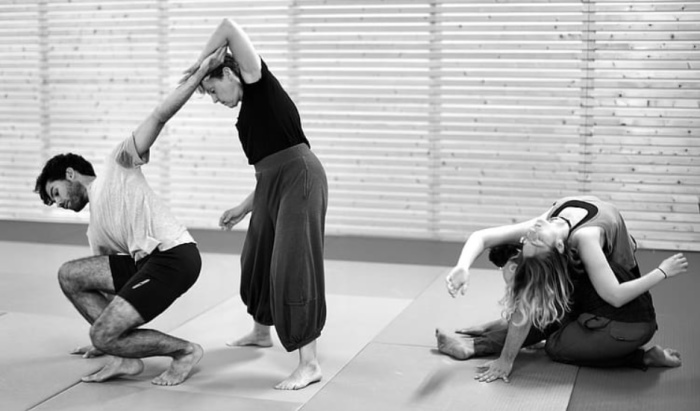“The Mother of Dance”, Isadora Duncan, has the credits as the one who started the Interpretive dance. It is a challenge of fitness and gymnastics in dancing.
Rather than signature movements, the Interpretive dance is a combination of various styles. Its ultimate purpose is to convey emotions and fantasies through dramatic postures and expressions.
You can say it is very different from traditional dances.
Table of Contents
Types Of Interpretive Dance
Improvising Dance
Improvisation is the quintessence of this style as the dancer has to come up with movements right on the spot. To succeed in that, they need a variety of materials, which comes from explorations in creativity and body mapping.
At first sight, you will get the impression of something impulsive and spontaneous, not strict or structured about techniques.
And it indeed gets the inspiration from daily life. It evokes emotions and provokes thoughts as much as any codified dance style does.
Aside from inventing new moves, improvisation is also an excellent way to pull your body out of any habit in movements.
It is described as a method to reach deeper inside and disclose hidden feelings, remaining as true to oneself as possible.
Check more: What Is Cabbage Patch Dance?
Lyrical Dance
Nowadays, you will frequently encounter lyrical dance in competitions. There are several sources believed to be the origin of this style:
- According to Jimmy Peters, lyrical dance comes from musicals’ “dream ballet”.
- Chelya Clawson, on the other hand, traced it back to the traditional Indian dance in the 16th century.
- Last but not least, Phyllis Balanga Demoret stated that it only started a few decades ago, for ballet is not suitable for the competition scene.
Suzi Taylor – a choreographer, teacher, and dancer with classes in NYC – is widely recognized as the mother of lyrical dance.
With versatile expressions and unique musicality, she successfully inspired many fellow instructors as well as students.
As the name indicates, a lyrical dancer will perform according to the lyrics of a song and simultaneously showcase their expressions. It has a strong individual sense, which is more important for this genre than precise techniques.
Embodying a wide range of styles such as ballet, jazz, modern dance, and acrobatics, the teachers might sometimes struggle to guide their students properly.
Whether it is taught as a technique or a style, the choreography exists to give the dancers a guide rather than a mandatory routine to follow.
Free Dance
Before modern dance became a thing, free dance was the resistance against classical ballet.
Renowned dancers like Isadora Duncan, Loie Fuller, and Ruth St. Denis all developed a style of their own in both dancing and teaching.

In Eastern and Central Europe, where national schools were a thing, free dance was prosperous.
They researched and theorized body movements to create new routines. Most especially, they didn’t hold back on the facial expressions.


